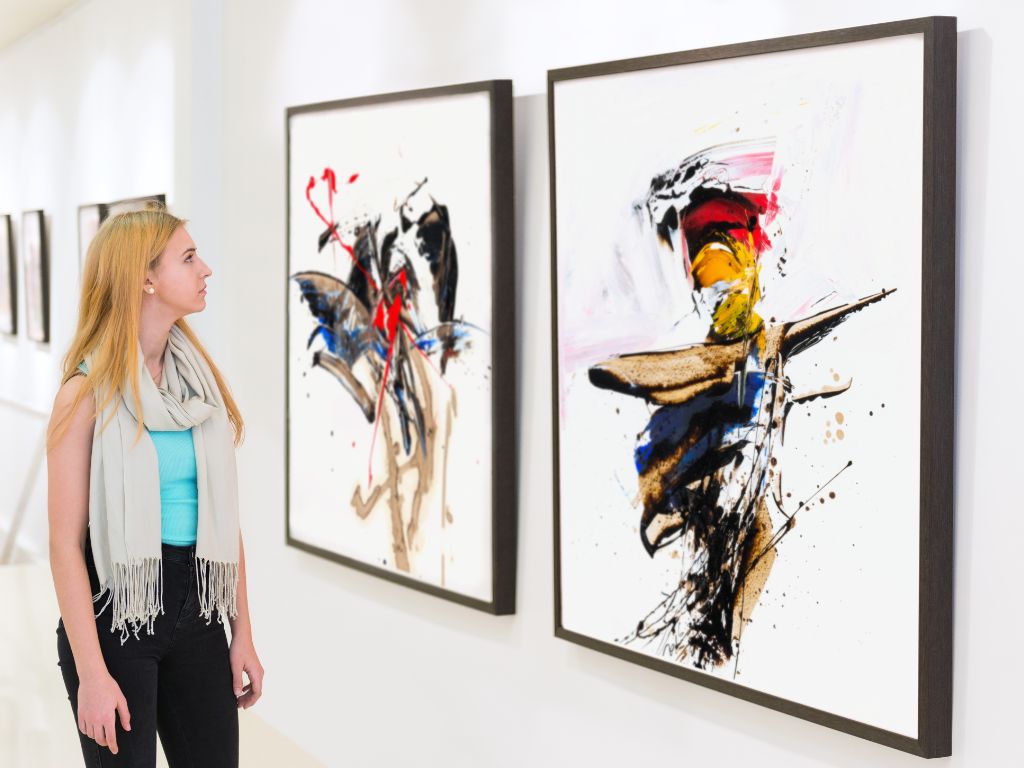As the art world becomes more digitized, the need for secure transactions and authentication has become increasingly important. Non-fungible tokens (NFTs) have emerged as a popular way to verify ownership and authenticity of digital art. However, to enhance the security of physical artwork, NFTs can be combined with specialized, secure near field communication (NFC) technology. In this post, we’ll explore how NFT with NFC enhances security in the art world and how it can benefit artists, collectors, marketplaces and galleries.
The Challenge
The art world has long struggled with issues related to authentication, ownership, and provenance. With the rise of digital art and online marketplaces, these issues have become even more complex. NFTs have emerged as a solution to these challenges, providing a secure and decentralized way to verify ownership and authenticity of digital art. However, there is astill a significant missing piece to this solution. How do you pair art which is physical with an NFT which is digital with an unbreakable link that binds the two and cannot be tampered with or cloned? This is where secure authentication NFC technology can play a role, by allowing physical artwork to be linked to an NFT on the blockchain.
What are NFTs?
NFTs are unique digital tokens that are used to represent ownership of a specific asset, such as digital art, music, or videos. They are built on blockchain technology, which allows for secure and decentralized transactions. Each NFT contains a unique set of data that verifies ownership and authenticity of the asset it represents. This data is stored on the blockchain, which makes it immutable and tamper-proof.
What is NFC?
Near field communication (NFC) is a technology that allows two devices to communicate wirelessly when they are in close proximity to each other. NFC is commonly used in smartphones, credit cards, and other devices that require short-range wireless communication. NFC tags can be embedded in physical objects, allowing them to be read by smartphones or other NFC-enabled devices. For the purpose of linking NFTs to physical art and pairing them with NFTs, the right NFC tags / printed electronic tags are highly specialized ones which use AES-128 encryption and generate random dynamic keys to prevent the possibility of replicating or cloning the tag or the URL used.
How NFT with NFC enhances security in the art world
By combining NFTs with NFC technology, physical artwork can be linked to a specific NFT on the blockchain. This provides a secure and decentralized way to verify ownership and authenticity of the artwork. NFC tags can be embedded in the artwork itself or in a certificate of authenticity. When the NFC tag is scanned with a smartphone or other NFC-enabled device, it can verify the authenticity of the artwork itself through the encrypted keys generated by the chip within the NFC tag and then further verify ownership and custody by linking it to the specific NFT on the blockchain and confirming the wallet the NFT is currently within. With a complete solution like the Qliktag Platform, it’s possible to use this to unlock certain features and functionality exclusively to the owner of the artwork.
Benefits of using NFT with NFC for artists, collectors, and galleries
There are several benefits to using NFTs with NFC technology in the art world. For artists, it provides a way to securely verify ownership and authenticity of their physical artwork, which can help to prevent forgeries and protect their intellectual property. For collectors and galleries, it provides a way to verify the authenticity of artwork before making a purchase, which can help to prevent fraud and increase the value of their collections. Additionally, it can help to streamline the buying and selling process, by providing a secure, digitalized and decentralized way to transfer ownership of physical artwork. It opens the possibility of someone being able to own the art through the NFT while being able to easily loan the art or display it in another location while still being able to transfer ownership when required and also leverage the smart contracts NFTs enable to determine royalties to the original artist and other terms. Moreover, since these specialized NFC tags ensure the artwork can be authenticated easily and makes it impossible to replicate or clone while trust in the artwork and value is increased.
Use cases for NFT with NFC in the art world
There are several use cases for NFTs with NFC technology in the art world. One example is in the sale of limited edition prints. By embedding an NFC tag in each print, it can be linked to a specific NFT on the blockchain, which verifies its authenticity and ownership. Another example is in the sale of physical artwork at auction houses and the ease of being able to digitally transfer ownership instantly. Tokenization and shared ownership of artwork becomes a possibility with NFT token and smart contracts. Ensuring royalty payments to the original creator beyond just the first sale of the art is another great feature this technology enables. The NFC enabled within the art that creates the one to one link also allows the artist to update the experience for the buyer, communicate to them via the artwork, deliver digital experiences and exclusive content or experiences and elevate the value of the art from the perspective of the buyer. This is a technology that can bring physical artwork to the digital era without altering the nature and beauty of physical art and yet, leverage the benefits of the digital world.

Recent Comments